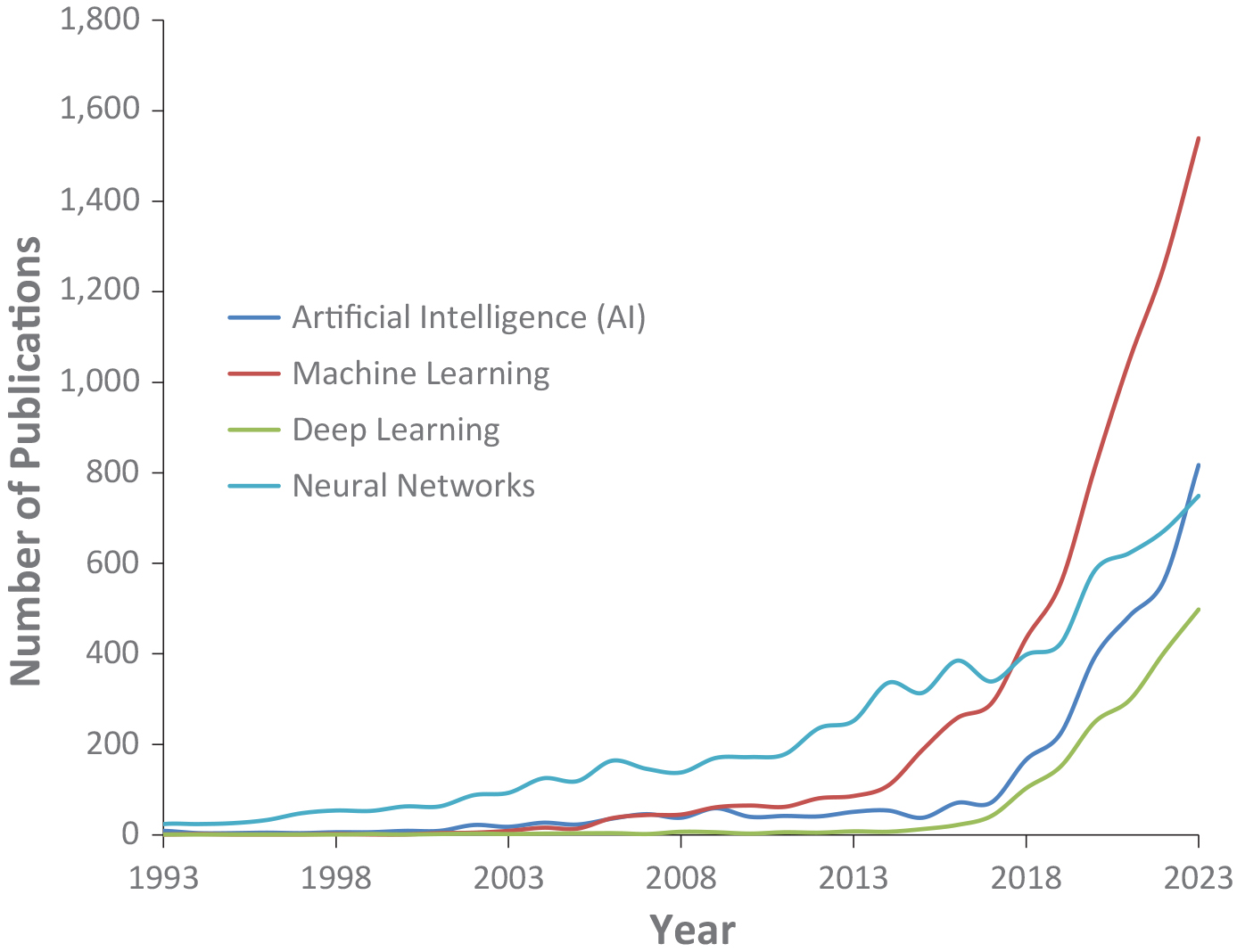Spring 2024
Artificial intelligence (AI) is being increasingly leveraged to characterize chemical exposures and health risks, and to predict the bioactivity of various chemicals.
“A dose-response relationship is a fundamental concept in toxicology that describes the relationship between the dose (amount) of a substance administered or encountered and the biological response it produces. Understanding the dose-response relationship is crucial for determining safe exposure levels to chemicals and assessing the risk associated with environmental and occupational exposures.” ChatGPT, a popular chatbot that uses artificial intelligence (AI), generated the previous statements when I asked it to explain the concept of a dose-response relationship. (As if ChatGPT was not satisfied stopping there, it went on to provide descriptions of three types of dose-response relationships, including linear, non-linear, and threshold.) My interaction with ChatGPT represents only one of the many budding intersections of toxicology and AI.
Despite the many potential uses of AI in toxicology, involvement and oversight of a (human) toxicologist remains essential.”
AI refers to the subdiscipline of computer science in which machines, computers, or models perform a variety of tasks at a level comparable to (or even exceeding) human intelligence (Lin and Chou, 2022). In toxicology, AI and its many branches, such as machine learning, deep learning, and neural networks, are increasingly leveraged to characterize chemical exposures and health risks. In fact, the last few decades have seen an exponential increase in the number of scientific publications on AI and toxicology (see Figure), so much so that more than 50 percent of the articles on the topic were published in the last four years.

Notably, AI is being used increasingly in toxicology to develop advances in exposure assessment. For example, Brandon et al. (2020) used AI to program computer-simulated humans, or “agents,” to engage in real-world patterns of behavior, such as sleeping, eating, working, and commuting. The authors proposed that longitudinal patterns of these AI-simulated behaviors would help exposure assessors to more accurately estimate the frequency and duration of chemical exposures. Additionally, AI is being leveraged in exposure assessment to create physiologically based pharmacokinetic (PBPK) models (Chou and Lin, 2023). Along with exposure assessment, PBPK models are useful in dose-response analysis and animal-to-human extrapolation because they describe the absorption, distribution, metabolism, and excretion of a chemical using various estimated parameters. Toxicologists are utilizing machine learning, a branch of AI that refers to the process of training computational models to solve problems or perform complex tasks via algorithms, to predict PBPK parameters based on a chemical’s physiochemical properties alone or in combination with in vitro data (Chou and Lin, 2023). Since PBPK parameters have been evaluated traditionally using animal experiments, the creation of AI-trained PBPK models that rely solely on physiochemical and in vitro information represents a potential savings in time and cost in the growing demand to evaluate chemical risks.
Predictive toxicology is another major focus of the potential uses for AI, particularly in its application to quantitative structure-activity relationships (QSARs) (Lin and Chou, 2022; Basile et al., 2019). QSAR is a computational modeling and simulation method that characterizes relationships between chemical structures and biological activities. Using AI technologies, toxicologists are “training” QSAR models to predict the bioactivity of various chemicals. For example, Cheng and Ng (2019) used a dataset of 1,102 per- and polyfluoroalkyl substances (PFAS) with existing bioactivity information to train QSAR models to predict the bioactivity of a broader set of 3,486 total PFAS. When the authors evaluated their AI-trained QSAR models using known bioactivity information from the Organisation for Economic Co-operation and Development (OECD) on the 3,486 PFAS, they found that the QSAR models classified the various PFAS with relatively high reliability (>91%).
Although the emerging intersection between AI and toxicology has grown rapidly in recent years, so has the appreciation of AI’s limitations. For example, a major limitation of AI in toxicology involves its “black box” nature, devoid of mechanistic explanation despite potentially accurate model predictions (Lin and Chou, 2022). There is a critical need for knowledge-based, theory-driven approaches in the use of AI in toxicology. The quality of data used to train models is another limitation of AI. “Big data” is not equivalent to good (or high-quality) data; thus, the evaluation and validation of AI-derived models is critical for ensuring their reliability. Therefore, despite the many potential uses of AI in toxicology, involvement and oversight of a (human) toxicologist remains essential. Toxicologists should ensure that AI models are not only mechanistically driven but also based on reliable, high-quality data. Indeed, as I typed out the final sentences in this article, the thought occurred to me as to how ChatGPT would respond to the question: “How is artificial intelligence used in toxicology?” Would it have generated an article comparable to what I have written above?
The author can be reached at sboomhower@gradientcorp.com.
Basile, AO; Yahi, A; Tatonetti, NP. 2019. “Artificial intelligence for drug toxicity and safety.” Trends Pharmacol. Sci. 40(9):624-635. doi: 10.1016/j.tips.2019.07.005.
Brandon, N; Dionisio, KL; Isaacs, K; Tornero-Velez, R; Kapraun, D; Setzer, RW; Price, PS. 2020. “Simulating exposure-related behaviors using agent-based models embedded with needs-based artificial intelligence.” J. Expo. Sci. Environ. Epidemiol. 30(1):184-193. doi: 10.1038/s41370-018-0052-y.
Cheng, W; Ng, CA. 2019. “Using machine learning to classify bioactivity for 3486 per- and polyfluoroalkyl substances (PFASs) from the OECD list.” Environ. Sci. Technol. 53(23):13970-13980. doi: 10.1021/acs.est.9b04833.
Chou, WC; Lin, Z. 2023. “Machine learning and artificial intelligence in physiologically based pharmacokinetic modeling.” Toxicol. Sci. 191(1):1-14. doi: 10.1093/toxsci/kfac101.
Lin, Z; Chou, WC. 2022. “Machine learning and artificial intelligence in toxicological sciences.” Toxicol. Sci. 189(1):7-19. doi: 10.1093/toxsci/kfac075.